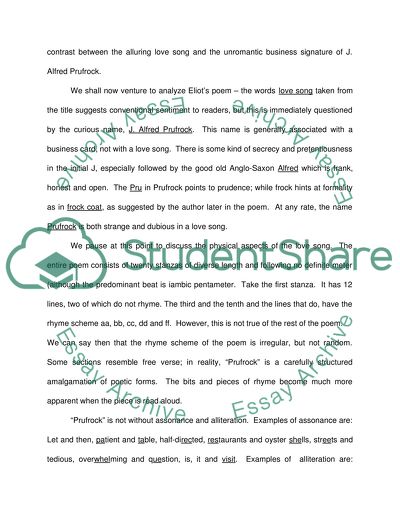Cite this document
(“T. S. Eliot: The Love Song of Alfred J Prufrock Essay”, n.d.)
Retrieved from https://studentshare.org/miscellaneous/1541829-t-s-eliot-the-love-song-of-alfred-j-prufrock
Retrieved from https://studentshare.org/miscellaneous/1541829-t-s-eliot-the-love-song-of-alfred-j-prufrock
(T. S. Eliot: The Love Song of Alfred J Prufrock Essay)
https://studentshare.org/miscellaneous/1541829-t-s-eliot-the-love-song-of-alfred-j-prufrock.
https://studentshare.org/miscellaneous/1541829-t-s-eliot-the-love-song-of-alfred-j-prufrock.
“T. S. Eliot: The Love Song of Alfred J Prufrock Essay”, n.d. https://studentshare.org/miscellaneous/1541829-t-s-eliot-the-love-song-of-alfred-j-prufrock.


